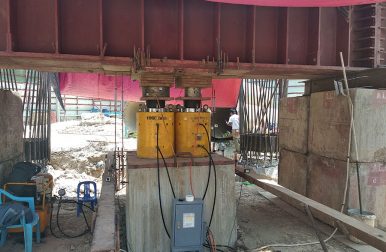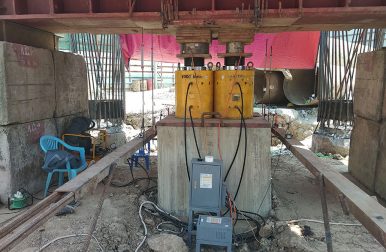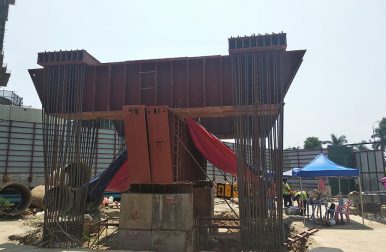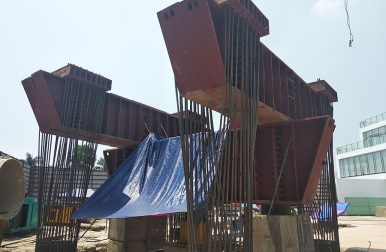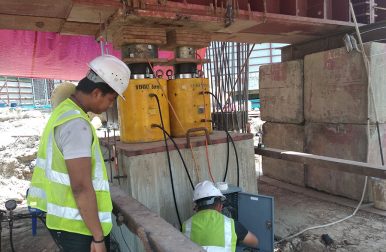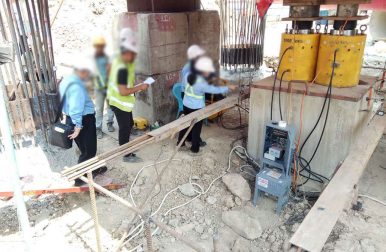INSTALLATION OF TEST PILE & TESTING WORKS
Static load tests are used to verify the capacity of bored piles. Maximum test load is 2 time to 3 times of design load. The testing was conform to modified ASTM D 1143/D 1143 M/07 Item 8.1.3 Procedure B. The test load was applied by hydraulic jack acting against steel reaction frame supported by nearby piles (Anchor piles). In addition the test pile was fully instrument by Vibration Wire Strain Gauge (VWSG’s) and Rod. Extensometers to evaluate load transfer along pile shaft and pile toe resistance. The static load test is the benchmark test for assessing pile performance. Well instrumented test piles provide feedback about the distribution of load along the length of pile.
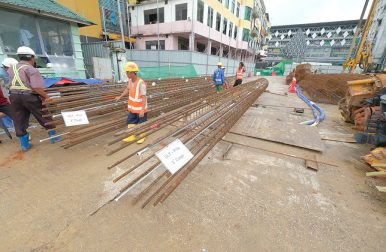

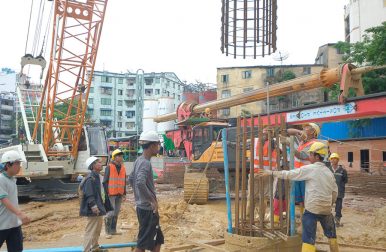
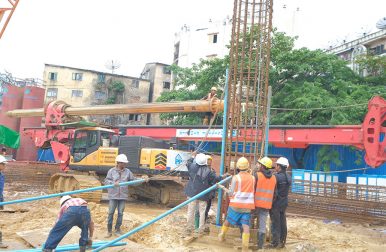
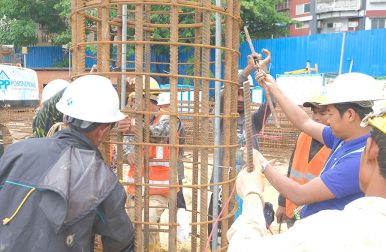
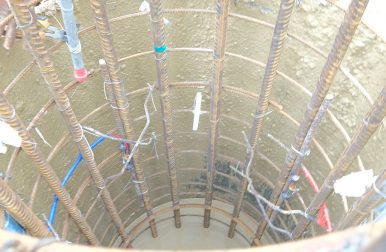
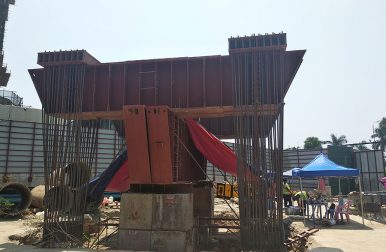
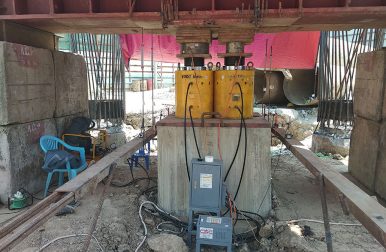
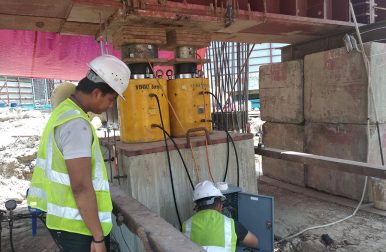
Koden Test
The Koden measuring device is a system based on ultrasonic distance measurement and is used to measure the shape and deviations of pile boreholes and slurry trenches. By means of these measurements it is possible to detect and plot local collapse of the borehole wall.
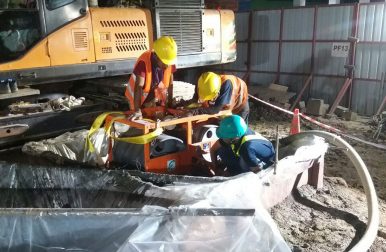
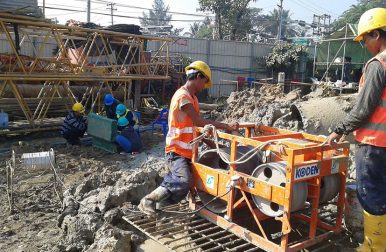
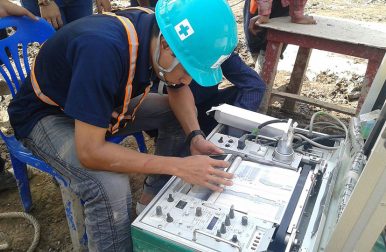
Pile Dynamic Load Test (PDA)
Dynamic load testing (or dynamic loading) is a method to assess a pile's bearing capacity by applying a dynamic load to the pile head (a falling mass) while recording acceleration and strain on the pile head. Dynamic load testing is a high strain dynamic test which can be applied after pile installation for concrete piles.
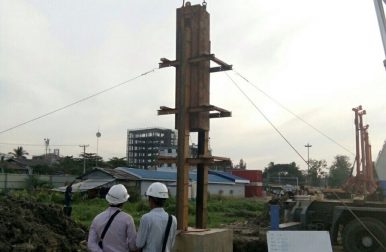
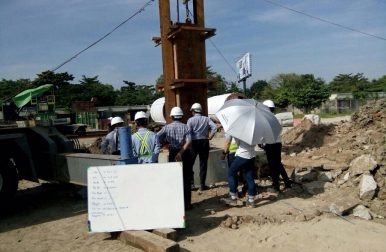
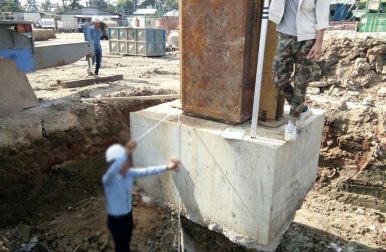
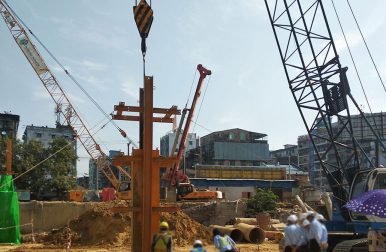
Pile Integrity Test
A pile is a slender element cast in the ground or driven into it. Since pile construction as well as the final product are mostly invisible, engineers have often questioned their integrity, i.e. their compliance with project drawings and specifications.
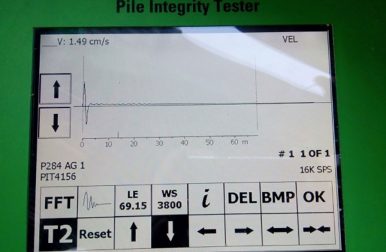

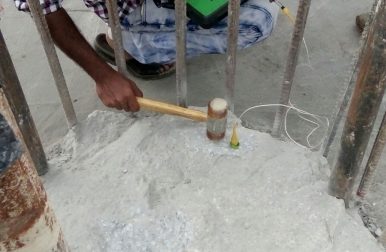
Sonic Logging Test
Crosshole sonic logging (CSL) is a method to verify the structural integrity of drilled shafts and other concrete piles. The CSL method is considered
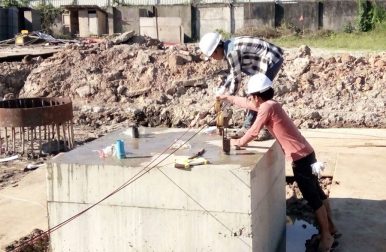
Static Load Test (WLT)
Static load testing is an in situ type of load testing used in geotechnical investigation to determine the bearing capacity of deep foundations prior to the construction of a building. It differs from the statnamic load test and dynamic load testing in that the pressure applied to the pile is slower.[1][2] Static load testings are performed in order to measure a design’s axial tension or axial compression. It can also be used to measure its deflected shape under lateral loadStatic Load Test (WLT) carried out by third party specialist tester.
